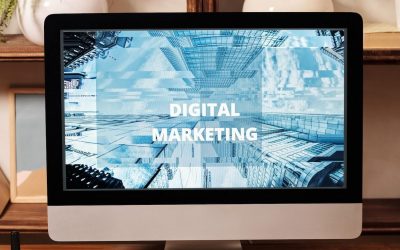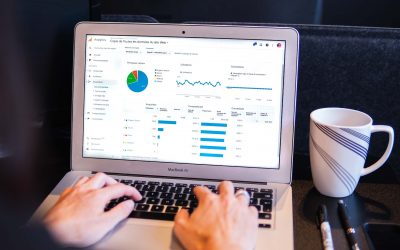
What is Paid Social Media Advertising?
Paid social media advertising, as the term suggests, refers to social media ads. Unpaid or organic posts are ones that the social media platform’s algorithm promotes based on a few dozen factors.
However, by their very nature, paid advertising tends to produce results sooner mainly because it bypasses the algorithm by paying to be seen.
As you might imagine, the campaigns are meant to help get more eyes on the product, a brand, or a service.
Usually, the ads are directly targeted at people whom the company assumes, based on their research, will be interested in these products and services.
Paid social media ads are a crucial part of a successful, much broader digital marketing strategy in general.
One of the reasons for this is that it helps businesses reach a much wider audience, enhances brand awareness and visibility, and helps gain valuable market insights.
All of this and more isn’t possible with other forms of traditional advertising.
The growing number of businesses turning to paid social media marketing means that it has become essential to pay to get the visibility you need.
But paying for visibility isn’t enough a significant factor of how well your ad does is its design and objective.
That’s why a paid social media strategy needs to have clear goals. Standing out will often mean that your ad can grab attention away from competitors’ ads and organic posts.
Suppose you are new to social media advertising or are considering using it.
In that case, we’ll go into how it works in this article and, more importantly, how running paid social media ads can benefit your business.
Paid Social Ads Versus Organic Posts
On a social media platform like Facebook, you will notice that posts by friends and family are prioritized in your feed.
That makes it nearly impossible for brands’ posts to reach the top of your feed organically, making a case for paid social media ads.
It is also why for paid social media ads to get noticed, they need to make it to the top of the feed and the relevant audience.
It is essential to understand that social media platforms like Facebook were initially developed as virtual public spaces.
However, over the years, monetizing these platforms meant that advertisers had to be allowed to advertise and reach their relevant target audience.
That’s why every social ad campaign is followed by lots of data like clicks, impressions, comments, likes, etc., all of which are useful for optimizing the campaign.
While many businesses who have never advertised on social media platforms may worry about costs, the fact is that whether you use the pay-per-click model or pay per thousand impressions, you have control over the budget.
You can set a budget and tell Facebook, for instance, to stop running ads once that budget has been maxed out.
Below we’ll take a look at how you can get started with paid social media campaigns.
Developing A Strategy For Social Media Platforms
Now before you dip your toes into paid social media advertising, you must start with setting a few goals.
Running social media ads can at first appear intimidating because there are so many places you can start.
Whether getting more signups for your newsletter, creating brand awareness, sales leads, or boosting traffic, social ads can help accomplish all of these, but your goal needs to be precise.
Once the goal is clear, deciding what social ad you would rather pay for will become easier.
The good news is that you see results almost right away with a paid campaign compared to organic social media.
Here are a couple of mainstream options that help you target millions of people across the world.
Running Paid Ad Campaigns On Facebook
The beauty of social media ads, in general, is that advertisers aren’t restricted to text-only ads.
Advertisers using Facebook paid ads are encouraged to use video and images to support text; after all, these are primarily visual mediums.
Images work best for products; videos are better suited for providing information or entertainment.
A business that sells clothes, for instance, will find that an image-based ad that shows the product or maybe the top pick product for the season will work best.
On the other hand, a business that wants to tell its story or show its work, like a special effects company or a videography service, is better off using video ads.
If one of your goals is to generate leads via Facebook advertising, you can use the Facebook lead ad campaign.
The paid media option gives you the ability to set up an ad with a single click, or you can redirect people to the landing page of the lead generation website.
Facebook also allows advertisers to integrate tools that make collecting leads and measuring the success of social ad campaigns easier.
The other option advertisers have is carousel ads.
These are single ads with a block of text and a couple of images. In our experience, these ads work best when you have multiple products, and they are great for remarketing campaigns.
Paid Instagram Ads
Similar to Facebook, Instagram allows advertisers to create video and image ads.
However, Instagram is a more image-centric social media platform, but a few second-long video ads perform well too.
It would help if you kept in mind that video ads on Instagram will start playing as soon as a user scrolls to it, but usually without audio. That’s why the ad you create shouldn’t solely rely on audio.
Instagram also gives you the option to create display carousel ads similar to that of Facebook, enabling you to tell a story, one frame or picture at a time.
Instagram Stories are a trendy feature and an effective way of grabbing attention. In addition, the ads will often pop up in the user’s story feed, allowing them to click through products.
The beauty of advertising on Instagram is that you can also have an organic social media strategy that works with it.
Paid Twitter Ads
Twitter is a micro-blogging platform popularized by its short, catchy conversational messaging system. However, paid Twitter ads can put you in front of a large audience.
When Twitter’s “Promote Mode” is enabled, you can promote the first ten organic tweets that you put out every day. At present, this costs $99 a month.
The feature promises that you can get up to 30 new followers and have the opportunity to reach 30,000 new people each month.
In our opinion, for a brand to make an impact using this feature, they need to say some fascinating stuff every day.
If you’d rather not spend this much money or would instead control what posts are promoted, it’s possible to create individual Twitter campaigns.
Usually, these are video and image-based ads similar to what you do on Facebook and Instagram.
If you are on a tight budget and want to run paid Twitter ads but control your ad spend, these can help give you a degree of control.
LinkedIn has a reputation for being a social media platform that’s angled towards professionals.
The platform allows you to get noticed by people looking for businesses and professionals like you.
However, paid LinkedIn ads work best when they include a 150 character headline coupled with a well-designed 1200x620 pixels image.
Though the goal, like all other forms of social media advertising, should be to create something people find interesting enough to engage with, so nothing sales-y works for social platforms in general.
LinkedIn also offers the option of InMail message ads. It takes a similar approach to email marketing because you send a personalized message to the customer’s inbox.
However, the message will only be received by an active user.
Interestingly LinkedIn’s social ad platform only currently exists for people who use a desktop computer, with the ad located to the top right of the feed.
Ads like these can work wonders for event marketing when paired with Facebook ads.
Paid Social Media Advertising Can Help Reach Your Goals
Today, social media platforms may not be limited to those listed above, but they are certainly the largest, generating the most buzz.
That’s why they are the focus of many brands selling products and services. But, if anything, they help you rise above all the noise to make an impact.
That said, getting into paid social advertising does not mean using all these platforms. You can start with one social platform and then begin advertising on others too.
A well-designed and thought-out campaign can deliver significant returns with a small budget as long as it clicks with social media users.
Whether it is attracting new customers, creating brand awareness, or increasing the number of website visitors, having a solid social media presence is essential, and ads can help kickstart and boost the process.
The latest posts from the blog:
What is Digital Marketing?
[seopress_breadcrumbs] What is Digital Marketing? Primarily digital marketing refers to marketing that includes the use of electronic devices for promotional messaging and measures. However, in practice, digital marketing campaigns are mainly run on the internet and...
read moreThe Fundamentals of Digital Marketing
[seopress_breadcrumbs] The Fundamentals of Digital Marketing The fundamentals of digital marketing happen to be quite a bit different from regular or traditional marketing fundamentals. Starting twenty years ago, marketing started taking a new direction with the...
read moreWhat is Social Media Marketing?
[seopress_breadcrumbs] What is Social Media Marketing? Over the past couple of years, we've all heard about presidential campaigns being run on social media and malicious companies harvesting people's data. While rare, these are stories that almost always make the...
read moreWhat’s the Best Social Media for Business?
[seopress_breadcrumbs] What's the Best Social Media for Business? Many business owners new to the world of social media advertising often ask which social media platform is best for business. The problem with answering this question is that there are half a dozen...
read moreHow Does PPC Work?
[seopress_breadcrumbs] One of the most important digital marketing goals is to get a site to rank high organically on a search engine results page (most likely Google) for the most high-volume keywords in the industry. However, SEO takes time, effort, and knowledge....
read moreSEO vs PPC
[seopress_breadcrumbs] Getting traffic should be and in most cases is the goal of all online marketing efforts. In fact, the success of a business online relies highly on the amount of traffic generated and the quality of that traffic. In most cases, the subject of...
read moreABOUT ITONIC
A full-service digital marketing agency based in New York City. Delivering world-class results to hit our revered clients. Hitting KPI’s across Search, Social & Display.
Address:
iTonic Digital Marketing Agency,
315 Madison Avenue, #3075,
New York, NY, US 10017
Email: hello@iTonic.com
Phone: 646-982-0505
© iTONIC.COM 2018 – 2021. All rights reserved.
subscribe to Newsletter






